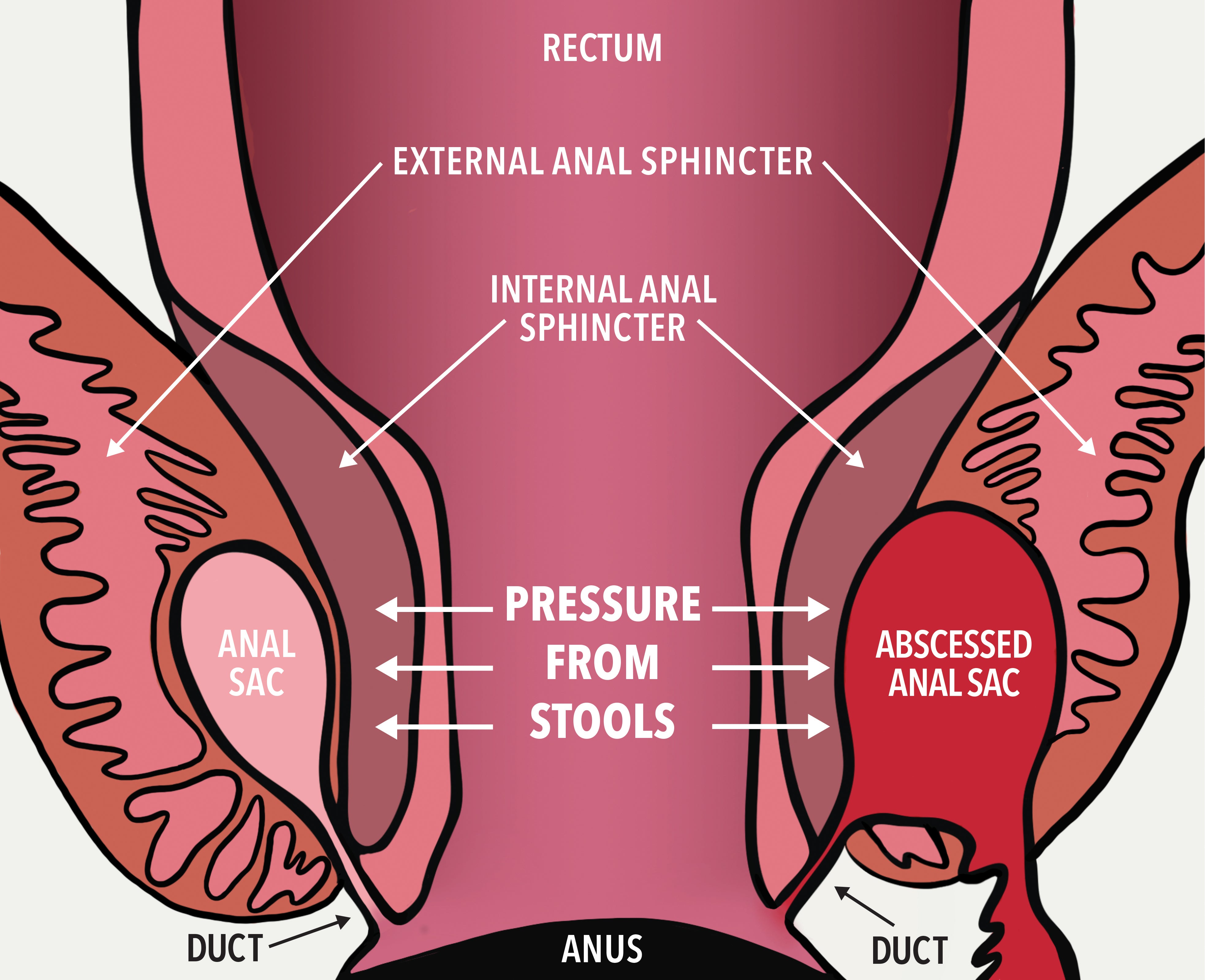DOG ANAL GLAND INFORMATION
Everything You Need to Know About Your Dog's Anal Glands
Dog anal gland issues affect millions of pets and are a very common and frustrating problem. Anal gland issues arise when the anal glands of dogs become over-filled, blocked, or irritated. All dogs have these two small glands (sometimes referred to as anal sacs) near the anal opening.
These glands, which are typically the size of a small grape, normally release a few drops of scent marking fluid whenever your pet defecates (observed near the end of defecation). If your dog’s anal glands don’t get expressed on a routine basis they can become clogged, leading to symptoms such as scooting, irritation, or an infection of the anal glands known as anal sacculitis.
For a comprehensive guide to causes, symptoms and treatments of anal gland blockages and concerns, visit Vetnique.comto learn more about supporting your dog’s gland health
DOG ANAL GLAND ILLUSTRATION
The illustration in figure 1 shows the relative size and position of the anal glands in dogs (often referred to as anal sacs). Note that the anal glands are internal and cannot be seen when viewing the rear end of a dog. When the anal glands become blocked or swollen they can enlarge which creates discomfort for your pet. Your pet may try to relieve this pressure by scooting or licking the area. This illustration shows only one enlarged anal gland but in most cases both anal glands are affected.

Symptoms of Anal Gland Problems in Dogs
If your pet's anal glands fill up excessively it can create pressure which can be very uncomfortable for your dog or cat. When this happens your dog might display symptoms of anal gland problems, the most common of which is scooting their rear end across the floor. Besides scooting, other symptoms of anal gland problems in dogs include a fishy or foul odor from your pet, excessive licking of the rear end, discomfort while walking or sitting, straining to defecate, or redness/swelling near the rear end.

Clinical Signs of Anal Gland Problems in Dogs
Scooting and discomfort of the rear end
Excessive licking of the anal area and hind end
Straining to defecate
Releasing a sudden foul (fishy) odor
Leaking of anal gland fluid
Bleeding and/or swelling near the anal region

DoG Anal Gland Anatomy
WHEN TO SEEK VETERINARY HELP FOR DOG ANAL GLAND ISSUES






